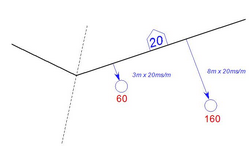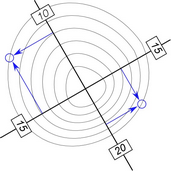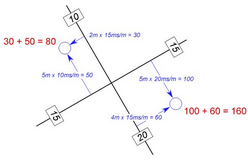Initiation Patterns
An initiation pattern is a group of holes that are tied together by either a non-electric or an electronic detonator system. Initiation patterns are the unit that is fired.
A hole cannot belong to more than one initiation pattern.
X/Y Zones
X/Y zones are only applicable to electronic detonator systems. Z timing zones (also only for electronic detonator systems) are managed with Charge Standards.
You can divide an initiation pattern into multiple zones in the X/Y plane so that you can use different timings in each zone. For example, you may want different timing for ore/waste separation, for mid-splits, or for independent firing of baby decks.

Electronic Timing
DataBlast Pro can calculate electronic timing from contour line, egg or box models, or by using incremental timing.
Contour Line
Add timing by drawing a contour line and assigning relief in milliseconds per metre. DataBlast Pro calculates the timing for each hole in the zone based on the perpendicular distance between the detonator and the segment of the contour line on the hole's side of a configurable dividing line.

Egg
Add timing by selecting the centre point of an egg and assigning relief in elliptical contour lines from the origin point. DataBlast Pro calculates the timing for each deck in the particular zone based on distance from the origin in each direction.

Box
Add timing by selecting the origin point of a box and assigning relief in each direction from the origin point. DataBlast Pro calculates the timing for each deck in the particular zone based on distance from the origin in each direction.

Incremental
Add timing by specifying an initial delay and then increments to the next hole. This timing is similar to non-electric surface hook-up.

Examples
This video, recorded using an earlier version of DataBlast Pro, provides an example of how to add incremental timing and zones for an electronic system.
This video, recorded using an earlier version of DataBlast Pro, provides an example of how to design timing using contours, egg and box cut for an electronic system.
This video, recorded using an earlier version of DataBlast Pro, provides an example of how to design timing for a non-electric system.




